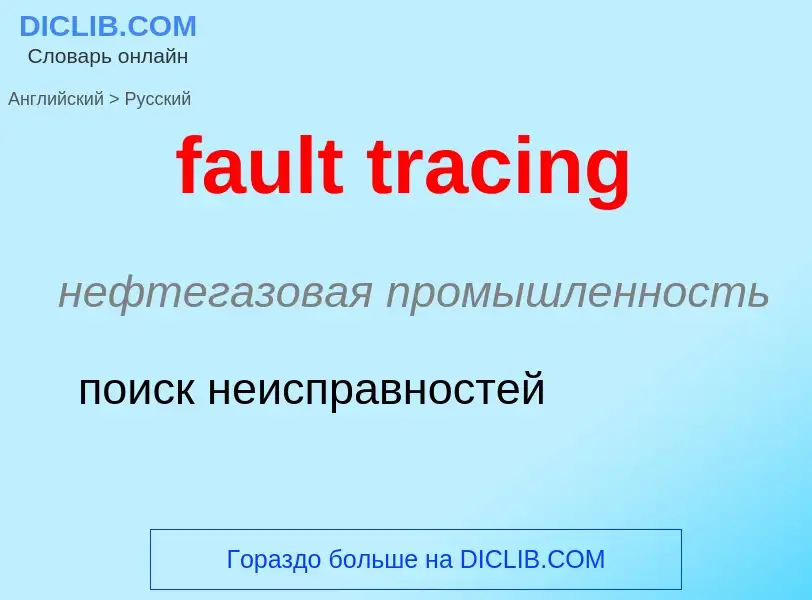Перевод и анализ слов искусственным интеллектом ChatGPT
На этой странице Вы можете получить подробный анализ слова или словосочетания, произведенный с помощью лучшей на сегодняшний день технологии искусственного интеллекта:
- как употребляется слово
- частота употребления
- используется оно чаще в устной или письменной речи
- варианты перевода слова
- примеры употребления (несколько фраз с переводом)
- этимология
fault tracing - перевод на русский
нефтегазовая промышленность
поиск неисправностей
общая лексика
сообщение с землей
нефтегазовая промышленность
неустойчивая неисправность, перемежающаяся неисправность
общая лексика
замыкание на корпус
общая лексика
ток повреждения
нефтегазовая промышленность
внутренняя неисправность
общая лексика
возникающее повреждение
общая лексика
страничная ошибка, отсутствие страницы
это на самом деле не ошибка, а ситуация в системе управления виртуальной памятью, возникающая при обращении к странице памяти, отсутствующей в ОЗУ. Отсутствие страницы обнаруживается на аппаратном уровне, в результате выдаётся аппаратное прерывание (page fault interrupt), по которому производится её подкачка с диска
Смотрите также
Определение
Википедия

Path-tracing is a computer graphics Monte Carlo method of rendering images of three-dimensional scenes such that the global illumination is faithful to reality. Fundamentally, the algorithm is integrating over all the illuminance arriving to a single point on the surface of an object. This illuminance is then reduced by a surface-reflectance function (BRDF) to determine how much of it will go toward the viewpoint-camera. This integration-procedure is repeated for every pixel in the output-image. When combined with physically-accurate models of surfaces, accurate models of real light-sources, and optically-correct cameras, path-tracing can produce still images that are indistinguishable from photographs.
Path-tracing naturally simulates many effects that have to be specifically-added to other methods (conventional ray-tracing or scanline rendering), such as soft shadows, depth of field, motion blur, caustics, ambient occlusion, and indirect lighting. Implementation of a renderer including these effects is correspondingly simpler. An extended version of the algorithm is realized by volumetric path tracing, which considers the light scattering of a scene.
Due to its accuracy, unbiased nature, and algorithmic simplicity, path tracing is used to generate reference images when testing the quality of other rendering algorithms. However, the path tracing algorithm is relatively inefficient: A very large number of rays must be traced to get high-quality images free of noise artifacts. Several variants have been introduced which are more efficient than the original algorithm for many scenes, including bidirectional path tracing, volumetric path tracing, and Metropolis light transport.



